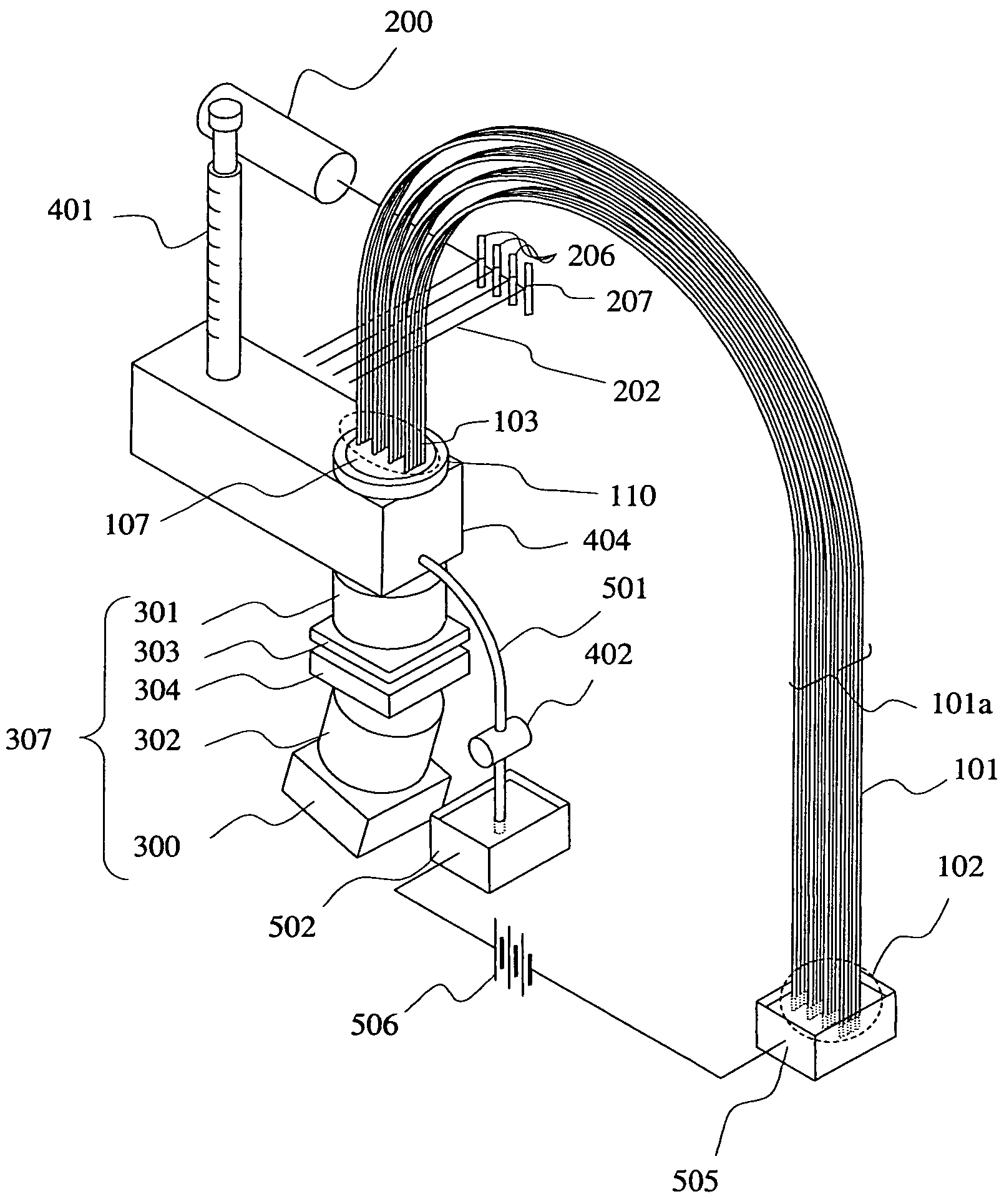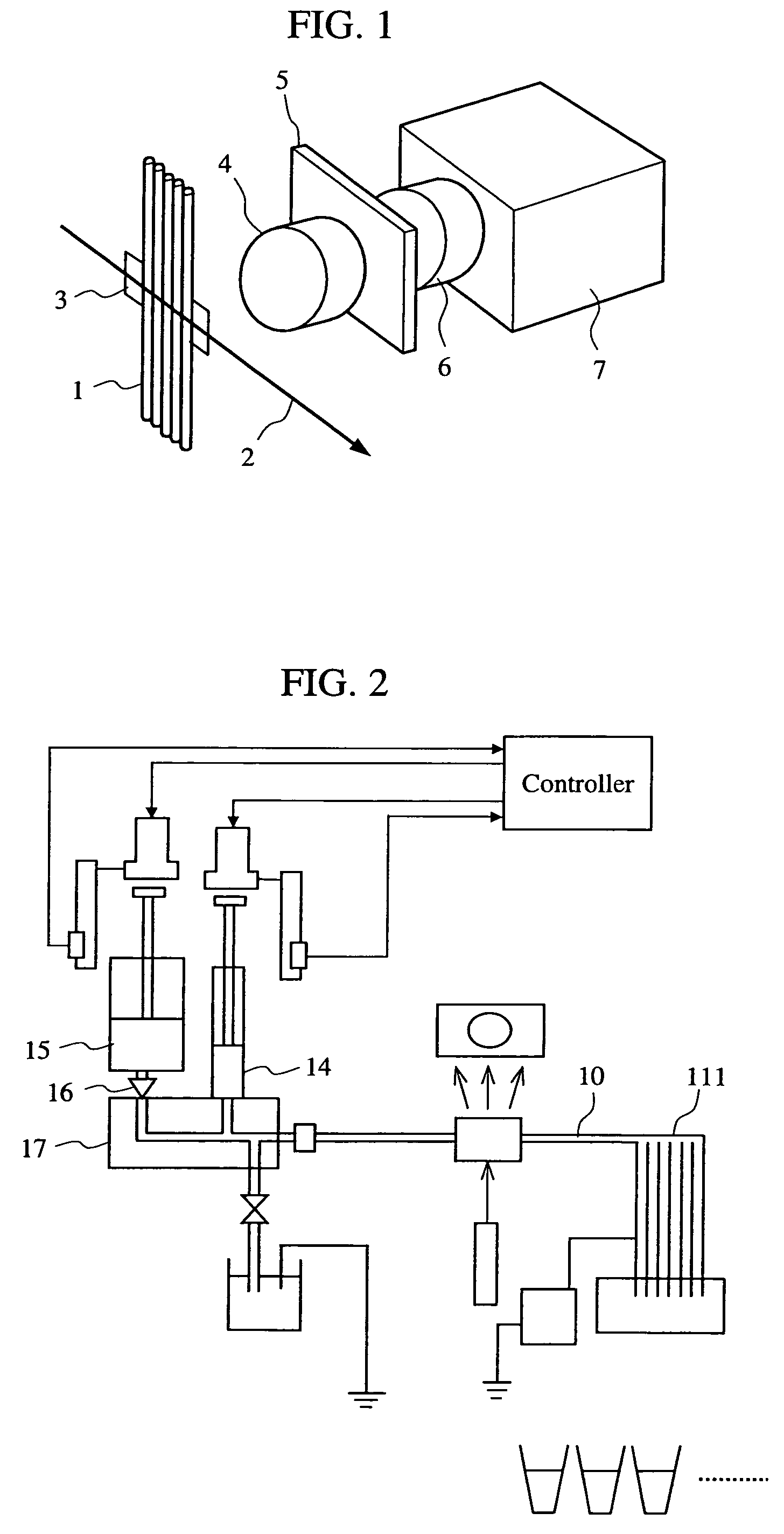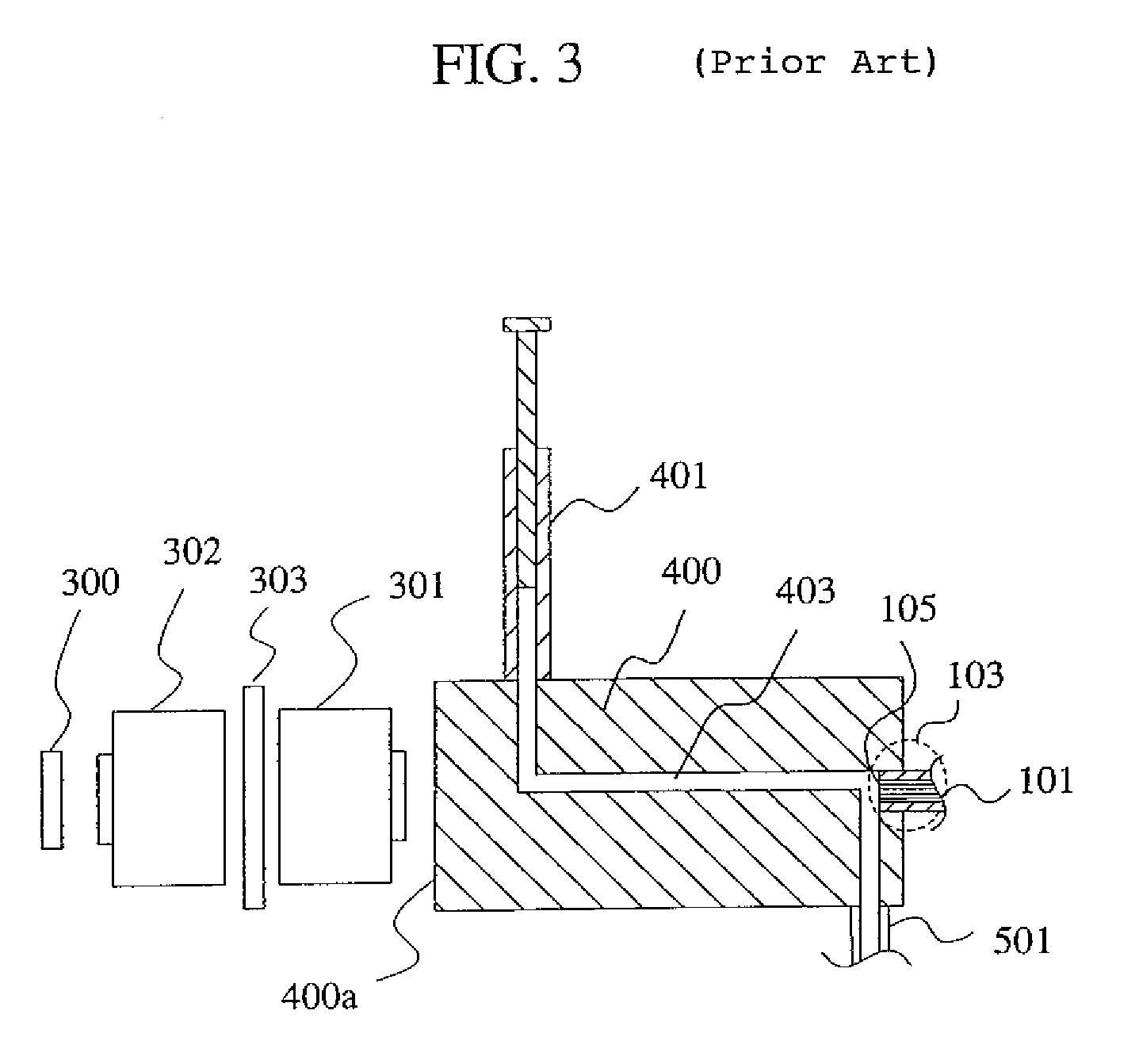Capillary electrophoresis apparatus
a capillary array and electrophoresis technology, applied in the direction of fluid pressure measurement, liquid/fluent solid measurement, peptide measurement, etc., can solve the problems of deteriorating fluorescence detection sensitivity and inability of conventional capillary array electrophoresis apparatus to perform such functions, and achieve high sensitivity
- Summary
- Abstract
- Description
- Claims
- Application Information
AI Technical Summary
Benefits of technology
Problems solved by technology
Method used
Image
Examples
first embodiment
[0046]FIG. 4 illustrates an automatic capillary array electrophoresis apparatus as an example. This example explains the way for analyzing electrophoresis of 20 capillaries at a time. 20 capillaries are bunched and form capillary arrays 101a. Each capillary 101 is made of quartz, and a polyimide coat is formed in the external surface of each capillary 101, which has a total length of 40 cm, an external diameter of 360 μm, and an internal diameter of 50 μm. Here, a capillary coated with fluorine resin can be used instead of the capillary coated with polyimide. In each capillary 101, a start edge portion 102 is a side of installing samples and an end edge portion 103 is a side of migrating and liquating out samples in the capillary by electrophoresis. A laser illumination position is a position which is 30 cm (10 cm from the end face of the end edge portion 103) from the end face of the start edge portion 102 of each capillary 101, and the polyimide coating of its capillary portion is...
second embodiment
[0059]The object of the present embodiment is to make real easy operability of cleaning and changing the detection window by dividing the polymer filling block 404 of FIG. 4 into 2 parts of a portion having the syringe 401 and a portion having the capillary array head 107, etc.
[0060]In the structure of the apparatus, only the structure of the polymer filling block 404 is different from the case of the first embodiment, but the structure other than this element is the same as the case of the first embodiment. The structure of a polymer filling block 406 and a detection block 407 of installing a capillary array head 107 of the present embodiment is indicated in FIG. 8. The capillary array head 107 is connected to the detection block 407 using the screw 110 and the ferrule 111. A method of connecting the capillary array head 107 to the detection block 407 and adjustment of the position of connecting the capillary array head 107 are the same as the first embodiment. The detection block ...
third embodiment
[0064]In embodiments 1 and 2, if electrophoresis is performed by applying voltage to each capillary 101, Joule heat is generated inside the capillary 101. In the capillary array head 107 as indicated in FIG. 5, since the capillary 101 is enclosed by the adhesive agent 108, the cylindrical fixing jig 106, the polymer filling block 404 or detection block 407, effectiveness of releasing Joule heat generated inside the capillary is low. Thus, the vicinity of the capillary array head 107 becomes high temperature. As a result, the polymer solution inside the capillary 101 near the capillary array head 107 and the polymer solution of the duct formed between the detection window 306 and the detection flat surface 109 are boiled, thus bubbles may be produced. If such a condition is caused, electrophoresis performance is degraded outstandingly and further fluorescence cannot be made. Accordingly, the object of the present embodiment is to remove effectively Joule heat generated in the capilla...
PUM
| Property | Measurement | Unit |
|---|---|---|
| distance | aaaaa | aaaaa |
| distance | aaaaa | aaaaa |
| internal diameter | aaaaa | aaaaa |
Abstract
Description
Claims
Application Information
 Login to View More
Login to View More - R&D
- Intellectual Property
- Life Sciences
- Materials
- Tech Scout
- Unparalleled Data Quality
- Higher Quality Content
- 60% Fewer Hallucinations
Browse by: Latest US Patents, China's latest patents, Technical Efficacy Thesaurus, Application Domain, Technology Topic, Popular Technical Reports.
© 2025 PatSnap. All rights reserved.Legal|Privacy policy|Modern Slavery Act Transparency Statement|Sitemap|About US| Contact US: help@patsnap.com



